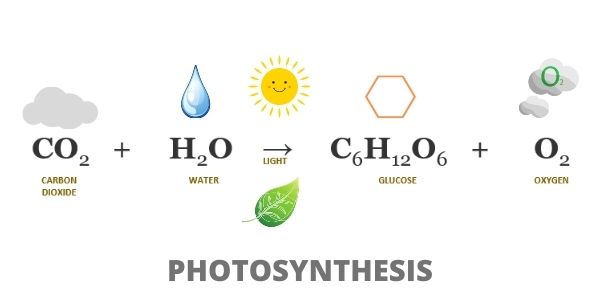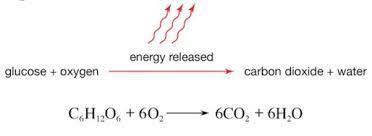Photosynthesis and respiration are fundamental biological processes that occur in plants and other organisms In this article, we will explore the distinctions between photosynthesis and respiration, highlighting their key characteristics and functions.
Table of Contents
Differences between Photosynthesis and Respiration
13 Important Differences Between Respiration and Photosynthesis in tabular form are as follows –
| Differences | Photosynthesis | Respiration |
|---|---|---|
| Photosynthesis | Respiration | |
| Definition and Purpose | It is the process by which plants prepare their own food and release oxygen in the presence of sunlight, chlorophyll, and water | It is the process of breaking down glucose using oxygen into carbon dioxide, water, and energy |
| Light Dependency | It takes place in the presence of sunlight only | It continues throughout day and night, regardless of sunlight availability |
| Survival Dependency | A plant can survive without photosynthesis for a number of days | No organism can live without respiration even for a few minutes |
| Cellular Involvement | Only green cells of the plant are capable of accomplishing photosynthesis | All cells of an organism perform respiration |
| Energy Absorption and Release | It absorbs sunlight and is an | It gives out energy and is an |
| Utilisation of Substances | It utilises carbon dioxide and water | It produces carbon dioxide and water |
| Metabolic Processes | It is an anabolic process that builds up complex compounds from simple inorganic compounds | It is a catabolic process in which complex substances are broken down into simple substances |
| Weight Change | It increases the weight of organisms | It decreases the weight of organisms |
| Energy Conversion | It converts radiation energy into chemical energy | It releases potential or chemical energy used within the body |
| Raw Materials | The raw materials are carbon dioxide and water | The raw materials are sugars and oxygen |
| End Products | The end products are carbohydrates and oxygen | The end products are carbon dioxide and water |
| It involves the release of oxygen and absorption of carbon dioxide | It involves the absorption of oxygen and production of carbon dioxide | |
| ATP Production | It produces ATP by harvesting light energy | ATP is formed from energy produced during the oxidation of food |
Differences between Photosynthesis and Respiration- Explained in details
Difference Between Respiration and Photosynthesis in terms of Definition and Purpose–
Photosynthesis- Photosynthesis is a process carried out by plants, algae, and some bacteria. It involves using sunlight, chlorophyll, and water to convert carbon dioxide into glucose (a simple sugar) and release oxygen. The primary purpose of photosynthesis is to produce food (glucose) for the plant and release oxygen into the atmosphere.
Respiration– Respiration is a process that occurs in all living organisms, including plants. It involves breaking down glucose (derived from food) using oxygen to produce energy, carbon dioxide, and water. The main purpose of respiration is to release energy stored in glucose for various cellular activities and to eliminate waste products.
Difference Between Respiration and Photosynthesis in terms of Light Dependency–
Photosynthesis- Photosynthesis relies on the presence of sunlight as a source of energy. Sunlight is absorbed by chlorophyll in the plant’s cells, initiating the chemical reactions necessary for photosynthesis to occur. Thus, photosynthesis only takes place in the presence of sunlight.
Respiration- Unlike photosynthesis, respiration does not depend on sunlight. It occurs continuously throughout day and night, enabling organisms to generate energy from glucose even in the absence of light.
Also Check – Name the factors affecting Photosynthesis
Difference Between Respiration and Photosynthesis in terms of Survival Dependency–
Photosynthesis- While photosynthesis is crucial for the long-term survival of plants, they can survive for a limited period without photosynthesis. In the absence of photosynthesis, plants can rely on stored energy reserves for sustenance. However, extended periods without photosynthesis will eventually lead to the plant’s death.
Respiration- In contrast, respiration is essential for the survival of all organisms. Without respiration, cells would not be able to produce the energy required for their functioning. Organisms cannot survive for more than a few minutes without respiration.
Difference Between Respiration and Photosynthesis in terms of Cellular Involvement-
Photosynthesis- Photosynthesis occurs primarily in the chloroplasts of plant cells, specifically in the chlorophyll-containing cells. These cells are responsible for capturing sunlight and carrying out the necessary chemical reactions to convert carbon dioxide and water into glucose.
Respiration- Unlike photosynthesis, which occurs mainly in specific cells, respiration takes place in all cells of an organism. All cells require energy, and respiration occurs in specialised cell structures called mitochondria. Thus, every cell in an organism is involved in respiration.
Difference Between Respiration and Photosynthesis in terms of Energy Absorption and Release-
Photosynthesis- Photosynthesis is an endothermic process, meaning it requires an input of energy. This energy is absorbed from sunlight by chlorophyll, which acts as a light-capturing pigment. The absorbed energy is used to convert carbon dioxide and water into glucose.
Respiration- In contrast, respiration is an exothermic process, releasing energy in the form of ATP (adenosine triphosphate). During respiration, the energy stored in glucose molecules is gradually released through a series of enzymatic reactions, providing the necessary energy for cellular activities.
Difference Between Respiration and Photosynthesis in terms of Utilisation of Substances-
Photosynthesis- During photosynthesis, plants utilise carbon dioxide from the atmosphere and water absorbed from the soil. These raw materials are converted into glucose, which serves as the primary source of energy and building blocks for the plant.
Respiration- In respiration, the raw materials are sugars (such as glucose) derived from food and oxygen obtained from the surrounding environment. These substances are broken down within cells to produce energy, carbon dioxide, and water as byproducts.
Also Check – Where do Plants get each of the Raw Materials required for Photosynthesis
Difference Between Respiration and Photosynthesis in terms of Metabolic Processes-
Photosynthesis- Photosynthesis is an anabolic process, meaning it builds complex organic compounds (glucose) from simple inorganic substances (carbon dioxide and water). It involves the conversion of light energy into chemical energy, which is stored in the form of glucose.
Respiration- Respiration is a catabolic process that breaks down complex organic compounds (glucose) into simpler molecules. Through a series of enzymatic reactions, glucose is oxidised to release energy, which is utilised by cells for various metabolic activities.
Difference Between Respiration and Photosynthesis in terms of Weight Change-
Photosynthesis- During photosynthesis, plants gain weight as they convert carbon dioxide and water into glucose and other organic molecules. The synthesised organic compounds contribute to the overall increase in the plant’s biomass.
Respiration- In contrast, respiration leads to a decrease in weight. This is because during respiration, glucose and other organic compounds are broken down, resulting in the release of carbon dioxide and water. The breakdown of organic molecules leads to the utilisation of stored energy, resulting in weight loss.
Difference Between Respiration and Photosynthesis in terms of Energy Conversion-
Photosynthesis- The primary conversion in photosynthesis is the conversion of light energy into chemical energy. Sunlight, absorbed by chlorophyll, is converted into chemical energy stored in the bonds of glucose and other organic molecules.
Respiration- Respiration involves the release of the potential energy stored in glucose and other organic compounds. This energy is converted into ATP, a molecule that serves as the main energy currency in cells.
Difference Between Respiration and Photosynthesis in terms of Raw Materials-
Photosynthesis- The raw materials for photosynthesis are carbon dioxide and water. Carbon dioxide is obtained from the atmosphere, while water is absorbed by plant roots from the soil.
Respiration– The raw materials for respiration are sugars (such as glucose) and oxygen. Sugars are derived from the digestion of food in organisms, while oxygen is obtained from the surrounding environment through respiration.
Difference Between Respiration and Photosynthesis in terms of End Products-
Photosynthesis- The end products of photosynthesis are carbohydrates (such as glucose) and oxygen. Carbohydrates serve as the main storage form of energy in plants, while oxygen is released into the atmosphere as a byproduct.
Respiration- The end products of respiration are carbon dioxide and water. Carbon dioxide is expelled as a waste product, while water is produced as a result of the breakdown of glucose and other organic molecules.
Difference Between Respiration and Photosynthesis in terms of Gaseous Exchange or gas released –
Photosynthesis- During photosynthesis, plants release oxygen into the atmosphere as a byproduct. Simultaneously, they absorb carbon dioxide from the atmosphere, which is used as a raw material for photosynthesis.
Respiration- In respiration, the opposite occurs. Organisms take in oxygen from the surrounding environment for use in cellular respiration and release carbon dioxide as a waste product.
Difference Between Respiration and Photosynthesis in terms of ATP Production-
Photosynthesis- Photosynthesis is not directly involved in ATP production. However, the energy stored in glucose molecules produced during photosynthesis is utilised in subsequent processes, such as respiration, to generate ATP.
Respiration– Respiration is the primary process involved in ATP production. Through the breakdown of glucose and the subsequent release of energy, ATP molecules are synthesised, providing energy for various cellular activities.
Also Check – Steps Of Photosynthesis
Photosynthesis Reaction and Respiration Reaction


Also Check – Respiration in Human Beings – Class 10
Also Check – Differentiate Between Aerobic and Anaerobic Respiration
Also Check – Importance Of Respiration
Also Check – Where do Plants get each of the Raw Materials required for Photosynthesis


8 Comments on “13 Important Differences between Photosynthesis and Respiration”